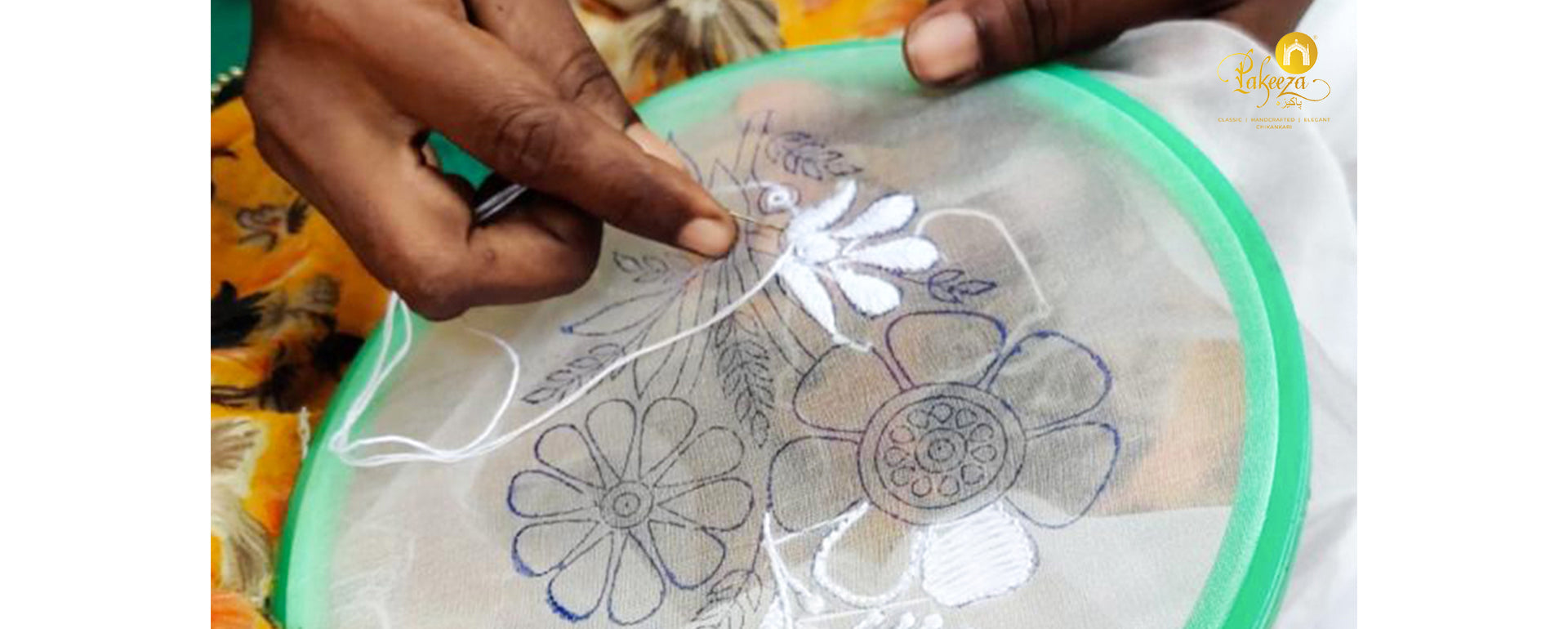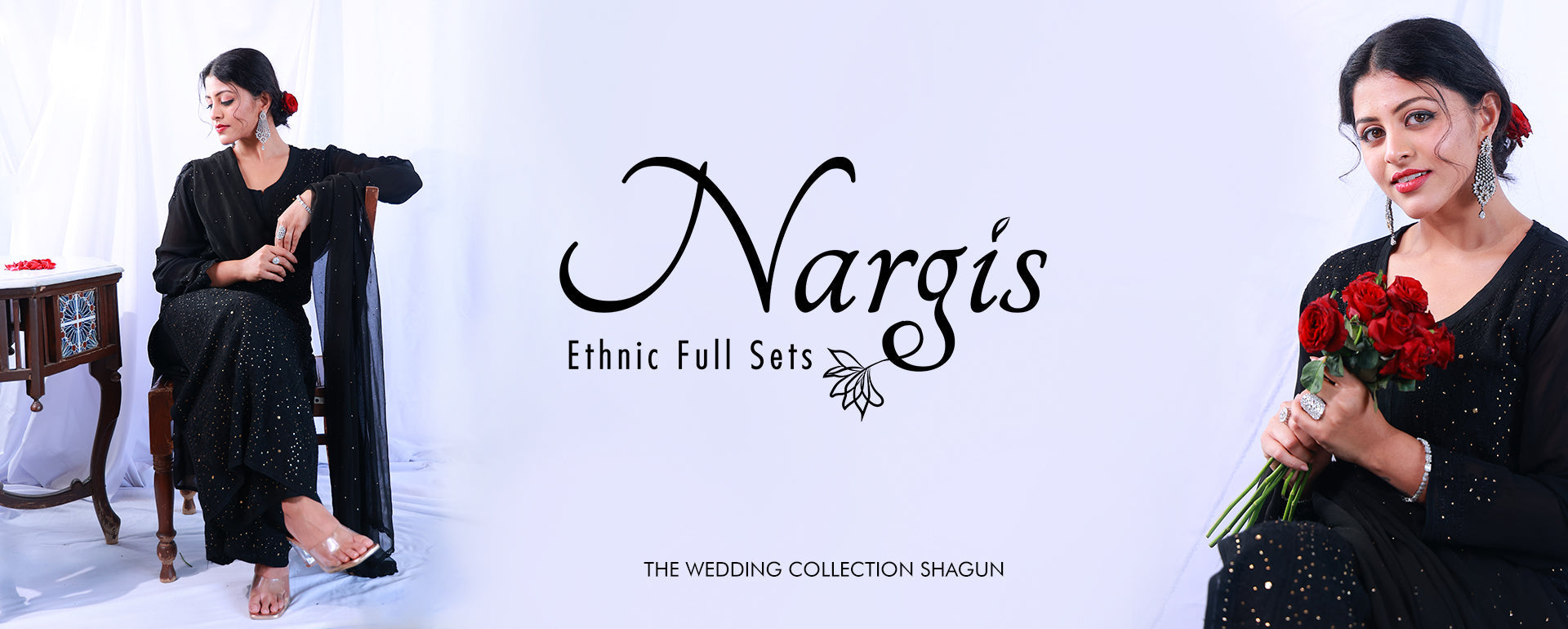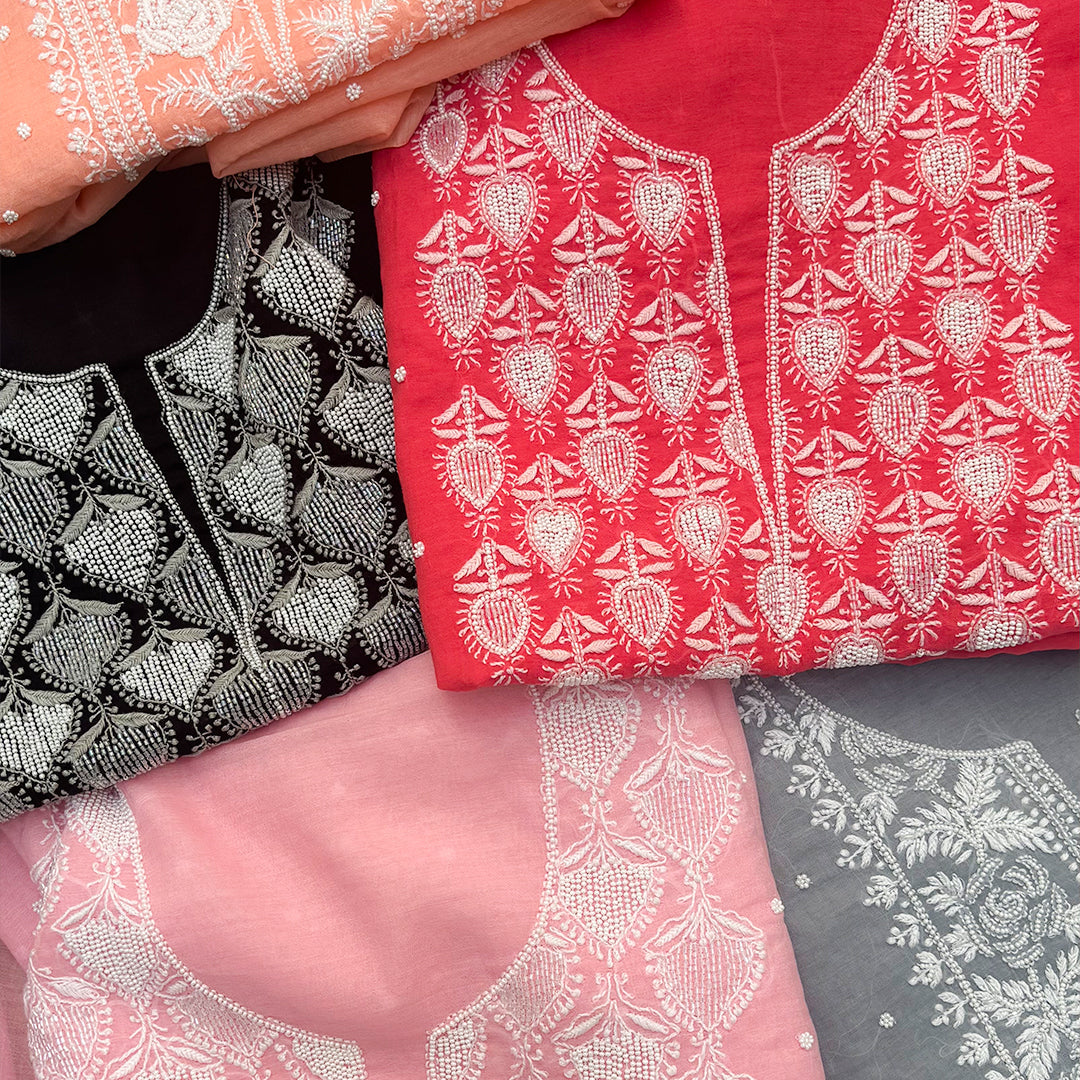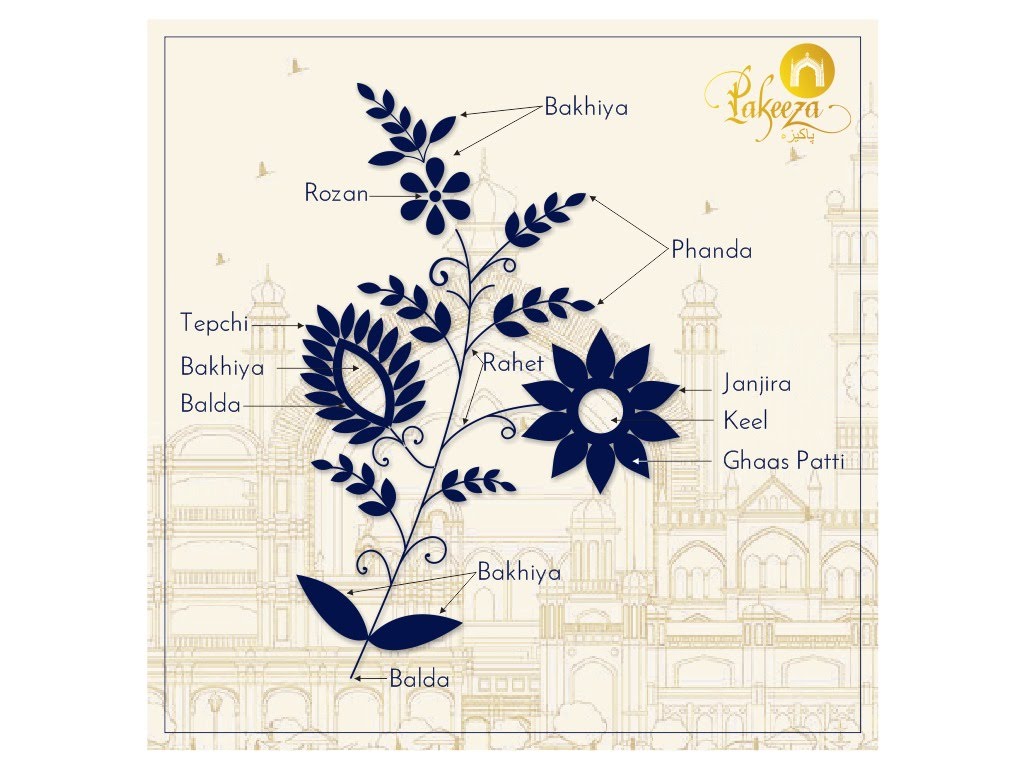The Origin of Chikankari
About Chikankari
Chikankari embroidery is one of the most exquisite and intricate forms of hand embroidery, with a rich legacy that dates back centuries. Known for its delicate and refined threadwork, Chikankari has adorned generations with its elegance and charm. But where did this beautiful craft originate? Let’s take a journey through the history of Chikankari, its evolution, and its current significance in the world of fashion and textiles.
Origin
The origins of Chikankari embroidery can be traced back to the Mughal era, with its roots steeped in Persian influences. While multiple theories exist regarding its inception, the most widely accepted belief credits Empress Noor Jahan, the wife of Mughal Emperor Jahangir, with bringing this art to India in the 16th century. Noor Jahan, a connoisseur of fine embroidery and craftsmanship, played a pivotal role in popularizing this intricate handwork within the royal courts.
Some historians suggest that Chikankari, or its early forms, existed even before the Mughal era, with traces of similar embroidery styles found in the Maurya and Gupta periods. However, it was under the Mughals that the craft flourished into the refined form we recognize today, drawing inspiration from Persian and Turkish embroidery techniques. Artisans meticulously crafted delicate floral and geometric patterns, which were soon embraced by the elite of the time.
The Flourishing Art in Lucknow
While Chikankari may have originated centuries ago, it truly found its home in Lucknow, the capital of Uttar Pradesh. The Nawabs of Awadh were instrumental in nurturing and elevating this craft, turning the city into the epicenter of Chikankari embroidery. The Nawabi era of the 18th and 19th centuries saw the art form flourish, with skilled artisans developing various stitches and intricate patterns that became synonymous with Lucknowi Chikankari.
Initially, Chikankari was done using white cotton thread on fine muslin or mulmul fabric, creating a sophisticated and ethereal look favored by the aristocracy. The embroidery was characterized by its delicate floral motifs, paisleys, and intricate jaali (net) work, which imitated lace. This meticulous craftsmanship was highly valued, with each piece taking weeks or even months to complete.
The patronage of the Nawabs ensured that Chikankari remained a treasured art form, with dedicated karkhanas (workshops) established to train artisans in the craft. These workshops upheld the highest standards of embroidery, passing down knowledge and skills through generations, keeping the tradition alive.
The Evolution and Present-Day Significance
With the decline of the Nawabi rule and the advent of industrialization, Chikankari faced challenges but managed to survive due to its timeless appeal. Over time, the craft evolved beyond traditional white-on-white embroidery, incorporating pastel shades and new fabric choices such as silk, georgette, chiffon, and organza. Today, Chikankari has transcended its original aesthetic and is widely used in contemporary fashion.
Designers have reimagined this traditional embroidery, integrating it into modern silhouettes such as sarees, kurtas, lehengas, dresses, and fusion wear. The versatility of Chikankari makes it a favorite among fashion connoisseurs worldwide, blending traditional craftsmanship with contemporary styles.
The artisans of Lucknow continue to uphold this centuries-old tradition, often working in small clusters and cooperatives to preserve the authenticity of hand embroidery. A single Chikankari piece can involve multiple artisans, each specializing in different stitches, ensuring that every garment remains unique.
In recent years, the growing appreciation for sustainable and slow fashion has led to a resurgence in demand for handcrafted textiles like Chikankari. Many ethical fashion brands and designers are championing this craft, promoting fair trade practices and empowering artisans by providing them with sustainable livelihoods.
Chikankari embroidery is not just an art form; it is a living heritage that represents India’s rich cultural and artistic legacy. From its Mughal-era refinement to its continued prominence in Lucknow, this exquisite embroidery has captivated generations and remains an integral part of the fashion industry.
As we move toward a more conscious and ethical approach to fashion, it is imperative to support the artisans who keep this beautiful tradition alive. Chikankari’s intricate charm and timeless elegance make it a treasure worth preserving for generations to come.
At Pakeeza, we take immense pride in celebrating this centuries-old craft. Our collection features hand-embroidered Chikankari pieces that reflect the authenticity, grace, and skill of master artisans. Explore our collection and become a part of this remarkable tradition!
To know more follow us on :
https://www.instagram.com/pakeeza.chikankari/
https://www.facebook.com/profile.php?id=61562930415160
To Shop Online: https://pakeezachikankari.com/












